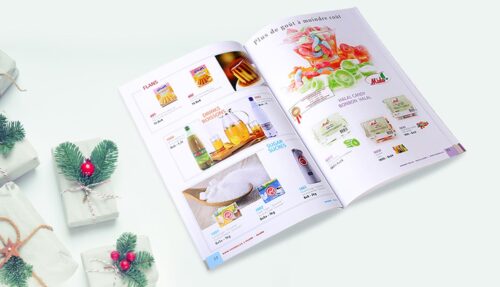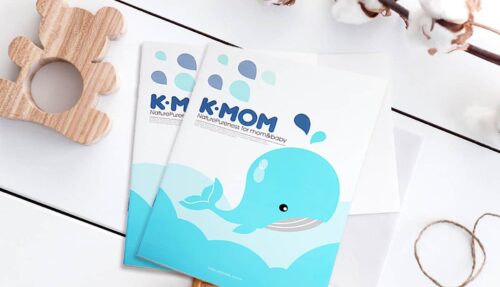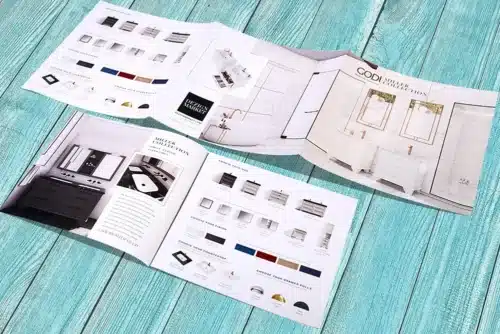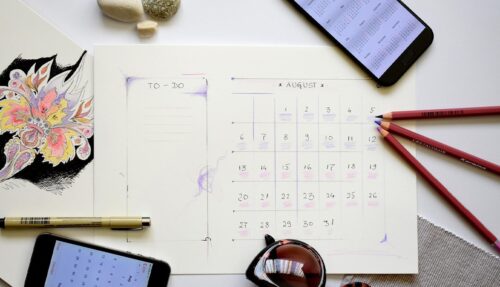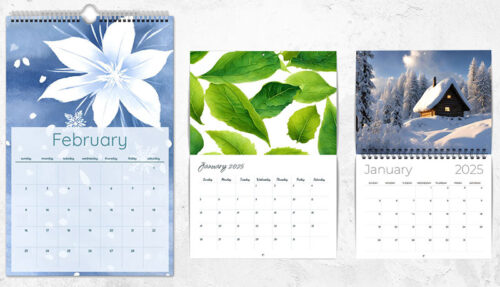Booklets play a major role in many aspects of off-line marketing and we show you how to make yours as effective as possible
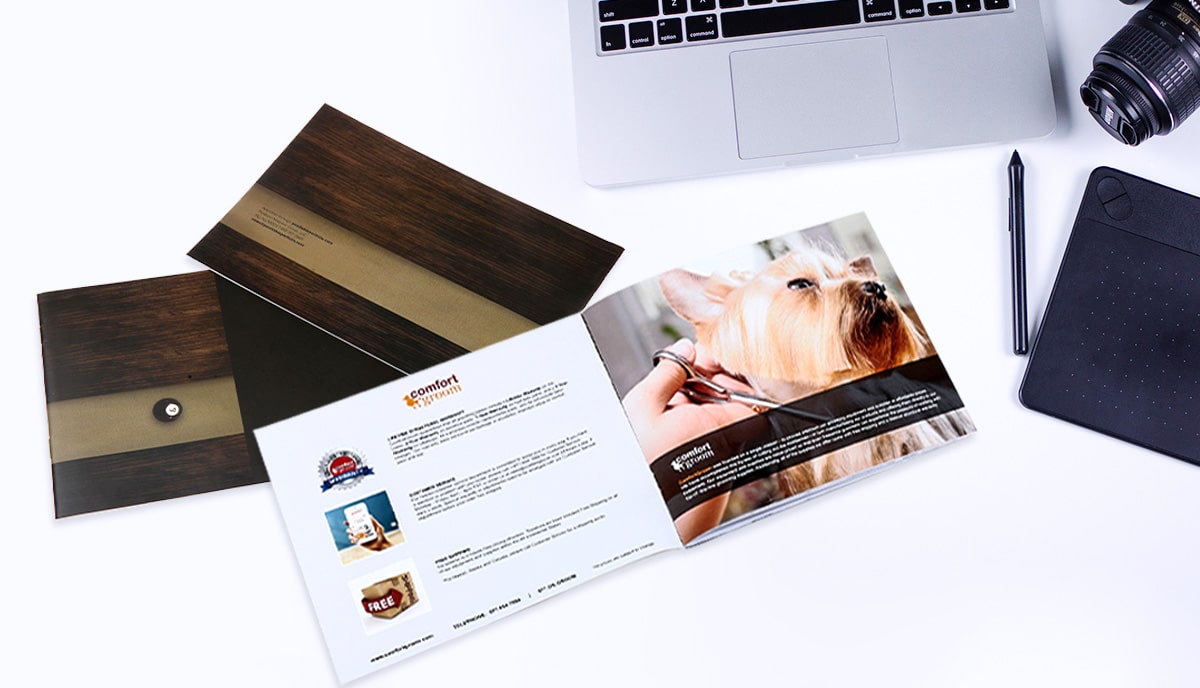
Image: Booklet Printed by QinPrinting
Most businesses choose offset printing for their marketing booklets because of the high-quality materials we use, the vibrancy and clarity of images, colors, text, and the low cost-per-unit prices. But just making your booklets beautiful isn’t always enough to make them effective. Let’s look at 10 proven ways that you can enhance the impact of your marketing booklets, promote positive outcomes, and ultimately increase the return on your investment.
1. Get your binding right
Booklets, as the name suggests, are just little books. That is, they’re printed and bound in much the same way as a larger book but they have fewer pages. If your booklet has 48 pages or fewer, your best binding option both in terms of appearance and cost will be saddle stitching. A saddle stitched booklet is made by collating folded sheets inside one another and then stapling them together along the crease, usually with an outer cover sheet of glossy art paper. But if your booklet is bordering on standard paperback size, with say 52, 100, 152 or more pages, you’re better off choosing perfect binding. Perfect binding is the same technique used for trade paperbacks.
2. Pay attention to design details
Unless you are a professional designer, you may struggle with the steep learning curve needed to use appropriate design software such as Adobe Illustrator or InDesign. At QinPrinting, we have an expert team of in-house designers always willing to help you and, on request, we can provide design templates which will make the whole process much easier. One of the most common mistakes we see is forgetting to account for the space needed for binding the inner edge of the pages, neglecting bleed zones for images, and forgetting about safe margins and trim lines. If none of that means anything to you, it’s not too difficult to learn by taking a basic course in design or even self-educating through YouTube videos and the best design blogs. But time spent getting these things right now will save a lot more time trying to reverse engineer design errors in the future.
3. Organize your content
If you’ve outsourced content creation to a professional freelance writer, this shouldn’t be a problem. But if you’re writing the content yourself, take care that you organize your thoughts in advance, express everything as clearly and succinctly as possible in simple, easy-to-understand language, and then reread and rewrite before you go to press. Better yet, invest in professional editing and proofreading.
4. Make your cover eye-catching
We’ve all heard the old saying, “don’t judge a book by its cover.” But everybody judges books — and booklets! — by their covers. So, make sure that yours is appropriate to the content, the intended market, and branded with your business colors and logo as well as being attractive and likely to arouse curiosity in the person who sees it. The same goes for the title. The best titles are both informative and intriguing. If you’ve taken the trouble to write or commission first-class content to go between the covers, you should go to equal trouble to craft a title which will make sure the content gets read.
5. Set your image resolution correctly
When You’re designing your booklet on your computer you will see your images resolved at about 72 ppi. On a computer screen, that looks great. But for offset printing, you will need to adjust your image resolution to at least 300 ppi to avoid the same images appearing smudged or pixelated in print. This is especially true if the images will be resized in the final product.
6. Choose an appropriate size and orientation
Booklets can be printed in a wide range of sizes and either portrait or landscape orientation. Many factors could influence which will be the best choice in your particular case. For example, if the booklets are to be mailed out, displayed in the stand, or handed out in-store. The content also plays a role in deciding the size and orientation of a good booklet. So, the importance of photographs and images and the layout of the interior text will need to align and be facilitated by your choices for size and orientation. Every aspect of printing an effective marketing booklet requires consideration and careful thought.
7. Choose the best paper
Given that a booklet is made of paper, you’d be surprised how many people don’t give it a second thought. But the choice of paper is fundamental to the success of your marketing booklet. Why? Because not all paper is appropriate for all purposes. For example, if your booklet relies heavily on high resolution photography, you will want gloss coated cover paper and perhaps matte lamination. If your booklet only contains text and basic graphics, then matte text paper or uncoated offset may be the perfect choice. If in doubt, talk to us. We are experts in this field and will be delighted to offer you our best advice.
8. Order the right size run
As we pointed out at the start of this post, one of the reasons most businesses choose offset printing for their marketing booklets is because of the significant savings you make on a cost-per-unit basis when bulk ordering your booklets. But of course, there’s no point ordering 50,000 booklets that have nowhere to go! While each booklet at that quantity would cost a few cents each, it wouldn’t necessarily make economic sense to order that many; and anyway, where would you put them? So, to make sure that your marketing booklet is effective, consider how many you really need and balance that against the cost of production and your available budget.
9. Integrate your booklet with your website
This is an opportunity that is often overlooked. So many people seem to think in terms of either online or off-line marketing. But why? Off-line, printed marketing materials are an excellent way to drive traffic to your online properties; whether that’s your company website, your blog, an online catalog, or your e-commerce store. How do you do it? The simplest way is to include your website URL in the header or footer of every page. A more advanced method would be to include a QR code which your targeted reader can then scan with their smartphone to take them to the landing page of your choice.
10. Split test your booklets
Most online marketers and content creators are familiar with the idea of split A/B testing to see what kind of content, advertising, or call-to-action generates the highest response rate. Fewer marketers consider using this technique with their off-line print marketing materials. But it’s a perfectly good idea. You can print two variants of your booklet, each with a different branding style, perhaps, or a different call to action, title, or cover design. If you integrate a feedback mechanism such as a QR code, traceable discount offer, or some other device, you can gather useful data about the effectiveness of your booklets. If one proves significantly more effective than another after analysis, you can then go ahead and order a larger run of that version.
Talk to us!
At QinPrinting, we’ve been working with marketing departments for businesses, non-profits, and independent creatives for over a quarter of a century now. We have a lot of experience in the field and will be delighted to share our knowledge and expertise with you to help you develop a booklet marketing campaign which is truly effective. Every aspect of booklet design and printing is important and nothing, however small it seems, should be ignored. Get in touch today to discuss your ideas or ask for a no-obligation quote. We can’t wait to work with you.







